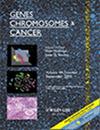Cytogenetic and Molecular Genetic Driven Prediction of Response to First-Treatment and Prognosis in Acute Myeloid Leukemia: A Retrospective Cohort Study
Abstract
Background
The first induction therapy is critical in determining subsequent treatment strategies and patient outcomes in acute myeloid leukemia (AML). This study aimed to comprehensively analyze the genetic landscape of AML patients to construct risk prediction models for the first-treatment response.
Methods
A total of 921 adult AML patients (Cohort 1) were included to characterize the genetic landscape and explore the correlations among genetic features in AML. To ensure the generalizability of the risk prediction models, 62 AML patients (Cohort 2) from another center were included in the modeling analysis. Risk prediction models for the first-treatment response were constructed using multivariable logistic regression with bootstrapping validation, and their impact on prognosis was also assessed.
Results
The cohort exhibited cytogenetic abnormalities, with favorable, intermediate, and adverse-risk features for 15.9%, 67.5%, and 16.5%, respectively. The top mutation genes were NPM1, FLT3-ITD, and NRAS. The top single nucleotide polymorphisms (SNPs) sites were GATA2 rs2335052, TP53 rs1042522, and TET2 rs2454206. Risk assessment models showed that for the intensive chemotherapy group, t(16;16) (p13; q22), CEBPA bZIP in-frame, and NPM1 type A were favorable factors, while trisomy 22, TET2, FLT3-ITD, FLT3 p.D835, ASXL1 rs750318549, and TP53 were unfavorable factors. For the non-intensive chemotherapy group, normal karyotypes and all CEBPA mutations were favorable factors. Calibration curves revealed an area under the receiver operating characteristic curve (AUC) of 73.3% for the intensive chemotherapy cohort and 66.1% for the low-intensive chemotherapy cohort. Among non-transplanted patients, significantly longer overall survival (OS) and progression-free survival (PFS) were observed in those predicted to achieve complete remission (CR)/CR with incomplete count recovery (CRi) compared to those predicted to not achieve CR/CRi.
Conclusion
This study first explores the combined role of karyotypes, mutations, and SNPs in AML treatment, offering valuable risk prediction models for guiding strategies.

 求助内容:
求助内容: 应助结果提醒方式:
应助结果提醒方式:


